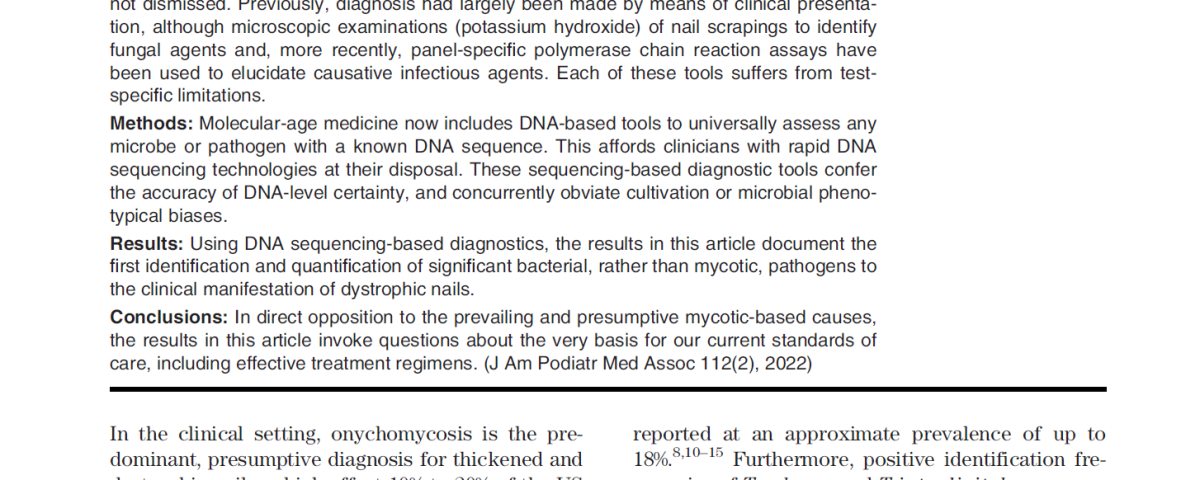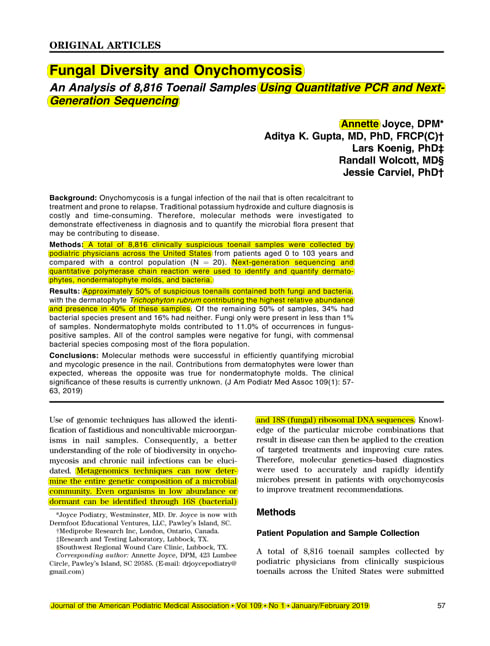Journal of the American Podiatric Medical Association Volume 122: Issue 2
STUDY: Historically recalcitrant to treatment, infection of the nail unit is a pervasive clinical condition affecting approximately 10% to 20% of the US population; patients present with both cosmetic symptomatology and pain, with subsequent dystrophic morphology. To date, the presumptive infectious etiologies include classically reported fungal dermatophytes, nondermatophyte molds, and yeasts. Until now, the prevalence and potential contribution of bacteria to the clinical course of dystrophic nails had been relatively overlooked, if not dismissed. Previously, diagnosis had largely been made by means of clinical presentation, although microscopic examinations (potassium hydroxide) of nail scrapings to identify fungal agents and, more recently, panel-specific polymerase chain reaction assays have been used to elucidate causative infectious agents. Each of these tools suffers from test-specific limitations. Using DNA sequencing-based diagnostics, the results in this article document the first identification and quantification of significant bacterial, rather than mycotic, pathogens to the clinical manifestation of dystrophic nails. In direct opposition to the prevailing and presumptive mycotic-based causes, the results in this article invoke questions about the very basis for our current standards of care, including effective treatment regimens. Read Study

